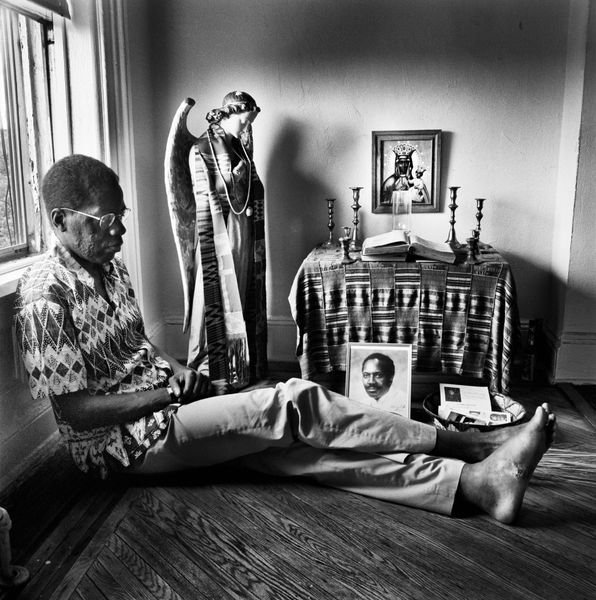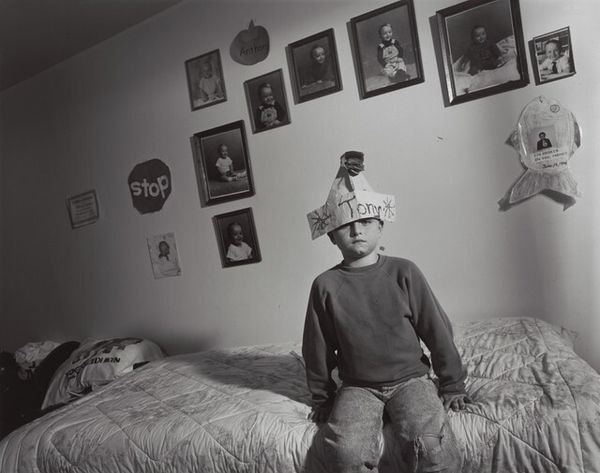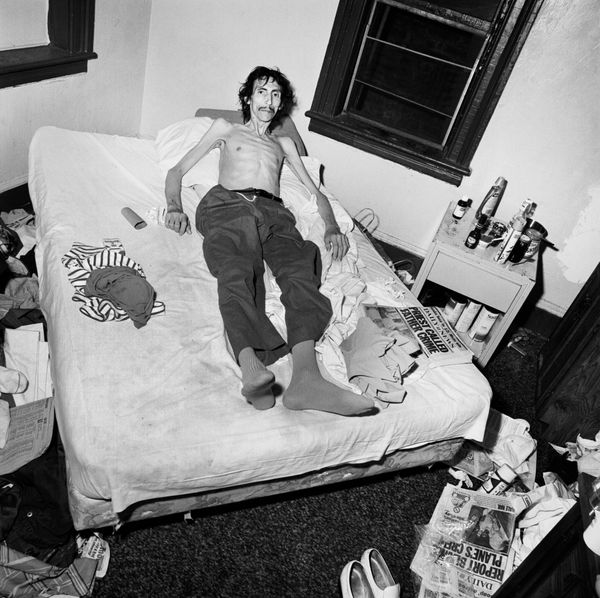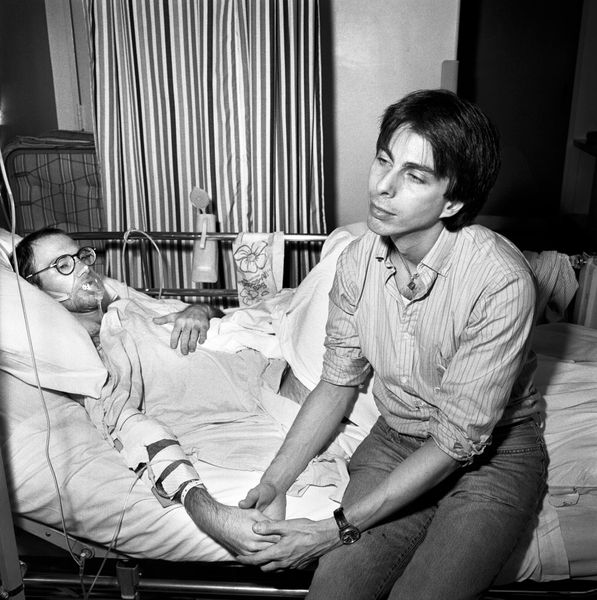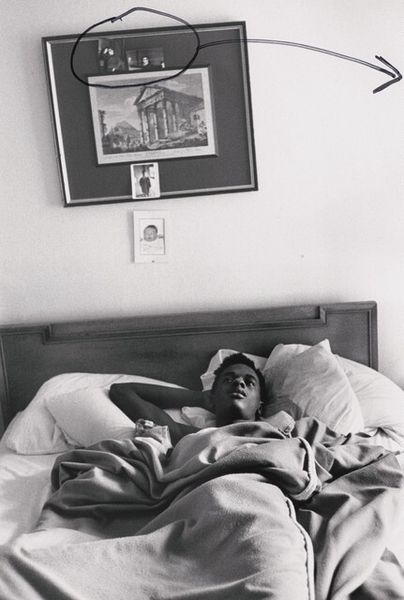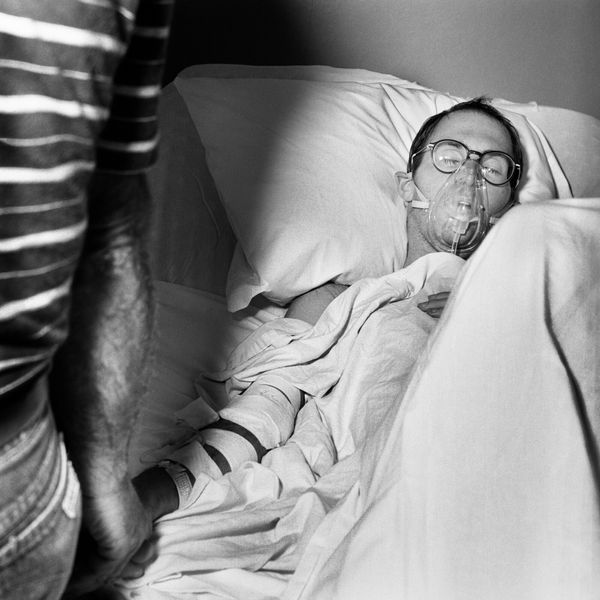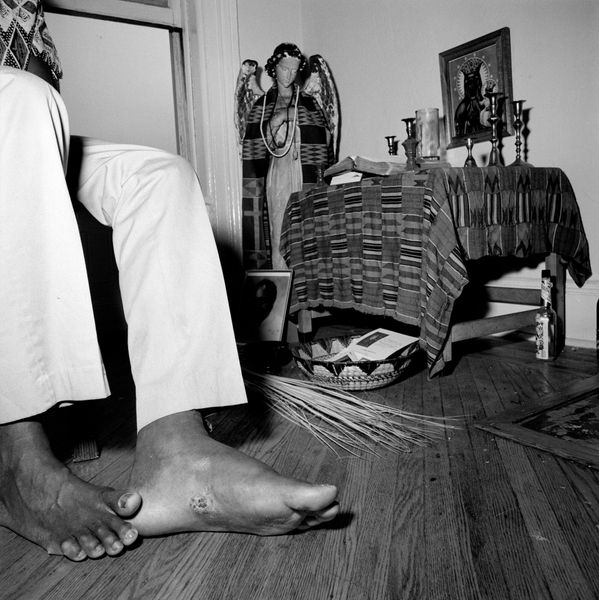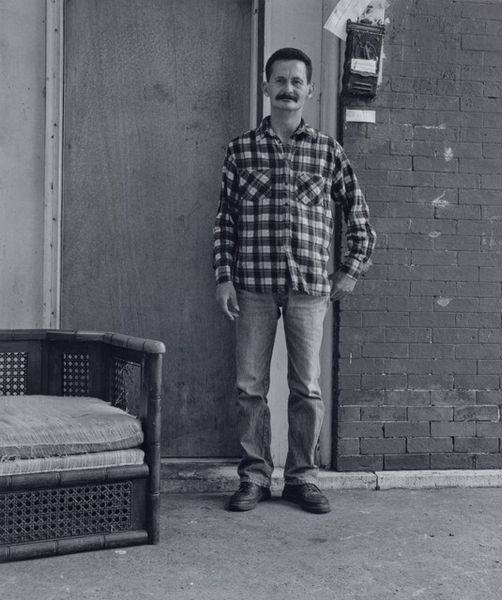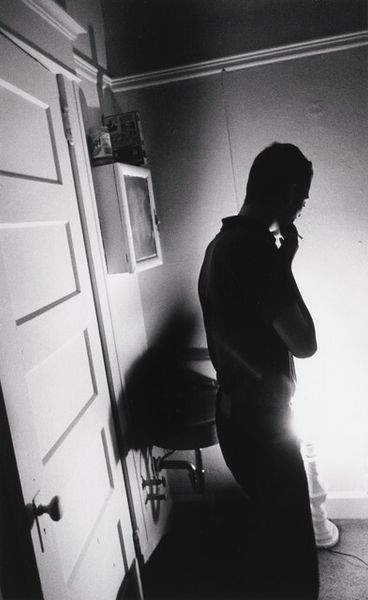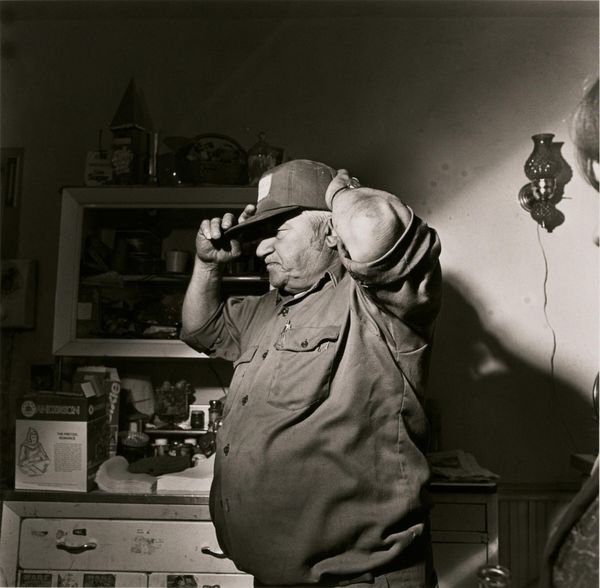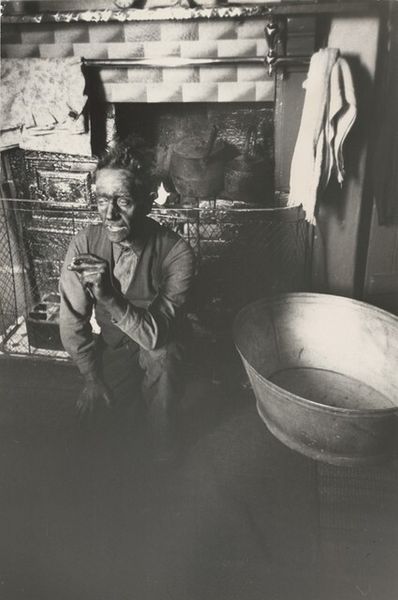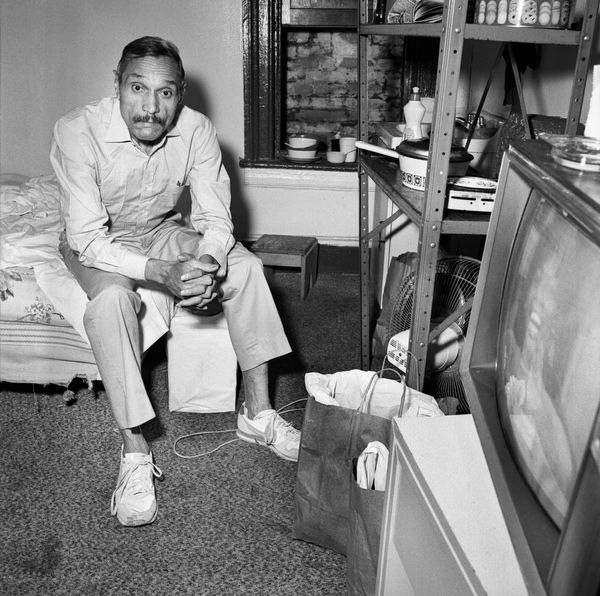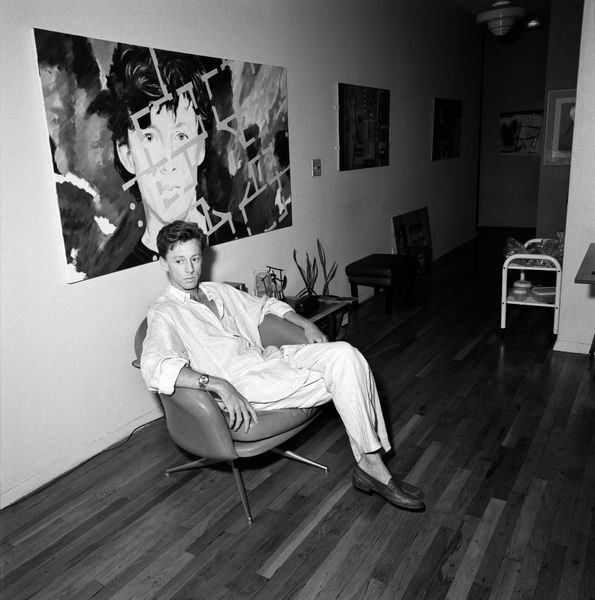
photography
#
portrait
#
self-portrait
#
narrative-art
#
black and white photography
#
street-photography
#
photography
#
black and white
#
monochrome photography
#
street photography
#
monochrome
#
identity-politics
#
realism
#
monochrome
Dimensions: image: 80.01 × 80.01 cm (31 1/2 × 31 1/2 in.) sheet: 108.59 × 101.6 cm (42 3/4 × 40 in.)
Copyright: National Gallery of Art: CC0 1.0
Curator: Rosalind Solomon's black and white photograph, "New York," from 1987, is quite striking. What are your initial thoughts? Editor: The gaunt figure in the center, combined with the gritty monochrome, certainly creates a feeling of unease and vulnerability. It feels very raw and immediate. Curator: That's a powerful reaction. I think the image speaks to the broader societal landscape of New York in the late 80s. Consider the AIDS epidemic, the crack cocaine crisis – a period marked by immense suffering and societal breakdown. Solomon's work frequently engages with identity and social issues. Editor: It does make me think about who had the agency to be portrayed and whose stories remained invisible back then. The figure’s large glasses and somewhat disheveled appearance suggest a fragility. Is this portrait offering a critique, a form of documentation, or something else? Curator: Solomon aimed to confront difficult realities head-on. In that era, such frankness about marginalized individuals and invisible suffering could be seen as politically subversive. Images like this demanded empathy and a reckoning with the hidden underbelly of a thriving metropolis. There are many stories within a place. Editor: Absolutely. The t-shirt adds another layer. It depicts what appears to be a skater on a half-pipe. It juxtaposes an idealized representation of athletic freedom against the harsh realities visible in the figure. The artist seems very deliberate in choosing details. Curator: These are key symbols, embedded in the subject’s presentation. Symbols that invite our reading as cultural fragments carrying memory forward in new arrangements and forms. This figure represents much of our continuity, if we're honest. Editor: It is fascinating to think about how an image like this circulates within art institutions – who is invited to look, how they are encouraged to look, and how meaning accrues over time. It creates an unavoidable record, doesn’t it? Curator: Exactly. "New York" leaves you pondering the weight of representation and the continuous influence of past events on how we understand ourselves, today. Editor: It has certainly made me re-evaluate the accepted narrative around that era. A necessary discomfort, I think.
Comments
No comments
Be the first to comment and join the conversation on the ultimate creative platform.
